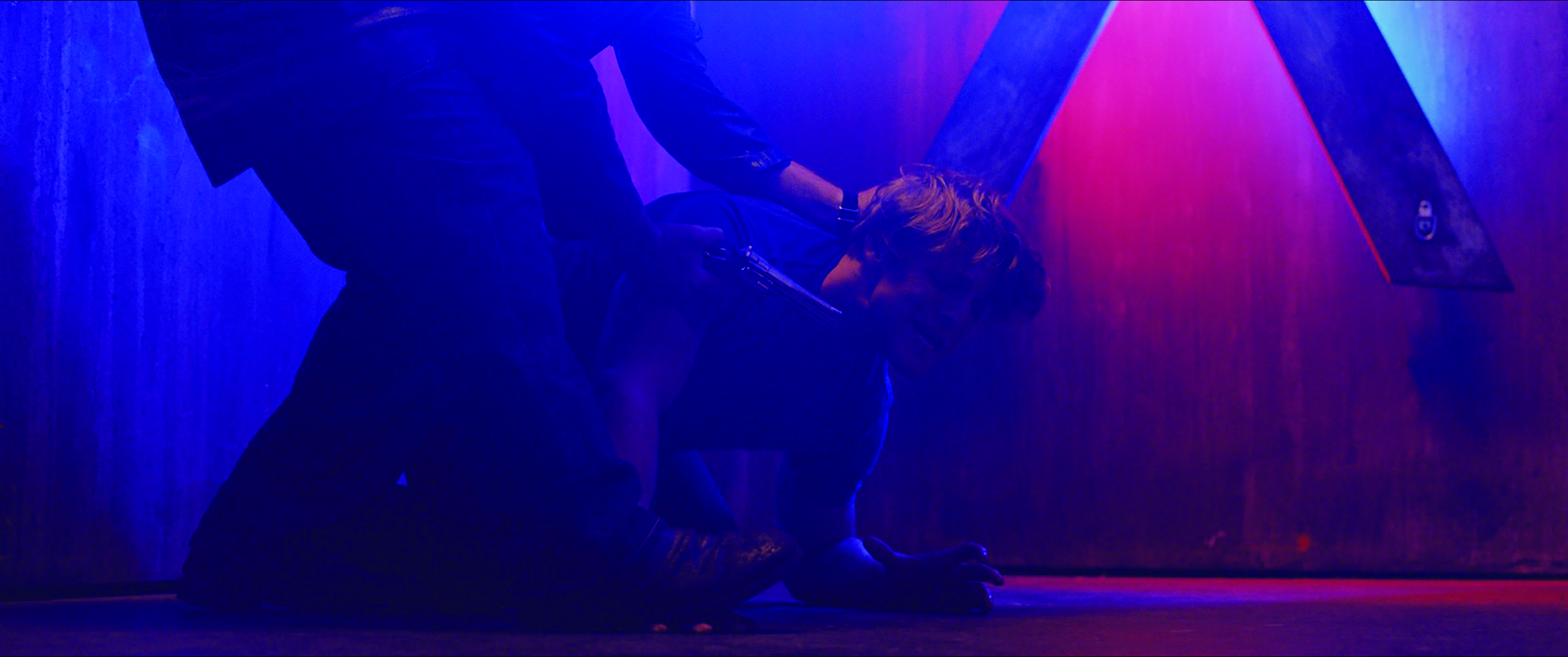Smaller Units Can Make a Big Difference
I am a consistent advocate for large sources such as ARRI M18s, HMIs or any physically large unit with an output of 2,000W or more. If you have a powerful light, you can shape and affect that light as needed without cutting a significant amount of its output. Larger sources are easy to avoid catching in the frame, easy to control and afford you more options as they give you a ton of output to begin with. It is always easier to start big and cut from a substantial source than to start small and ultimately not have enough light. However, let’s think about small sources for once.
WHAT ABOUT THE LITTLE GUY?
We all want huge, powerful lights on set, but we have to keep in mind the beauty and versatility of small units as well. They may not be able to light an entire scene or give you as much real estate as a bigger beam of light, but they can work wonders in terms of adding detail and interest to a space.

It’s simple to paint the frame with big units far from camera whether through windows or above the set. Looking at the frame with more detail, we can find ways to utilize smaller sources where these bigger lights can’t help us.
I’m not here to praise practicals again but these are obviously something additional to consider and a good place to start when you feel the need to motivate some smaller lights. Consider adding highlight and shape by hiding smaller units like Quasar tubes, which are sleek, bi-color LEDs, or the LiteRibbon from LiteGear, which you can simply run along a set piece for an elegant accent.
On the last feature film, hiding units like smaller Quasars proved very handy in creating contrast and separation of the actors from the background. Again, your giant lights illuminating the set are going to cast an overall ambience or focus and spread over a particular actor or area. With small sources you can add highlight or a splash of color where your other units can’t.
Smaller lights tend to feel like a source in the frame. They don’t spread like a large source does and tend to be harder instead of softer. If they’re apparent sources like practicals, all you have to decide is the type and wattage of the bulb to get the color and intensity to your liking.
The professional video industry's #1 source for news, trends and product and tech information. Sign up below.
However, if they are intended to be hidden and simply light the space, you may want to affect them a bit since they can draw attention to themselves in the frame. It can be helpful to wrap something like an LED tube in diffusion to soften and make it blend in a little more.
For example, if you placed tubes under cabinetry in a kitchen scene but didn’t want to see them in the shot, you could wrap them in diffusion and dim them down. If they aren’t dimmable, wrap them in ND gel to lower their intensity.
ADDING SHAPE TO SPACE
One of the best uses I have found for small units is adding shape to the space itself. I recently shot a bunch of talking heads against a wall of wood panels full of art and photographs. We put up small Dedolights and pointed them down the wall to add some shape. I also have used these small fresnels for uplighting, which is also really nice on a wall to add some character.

I wouldn’t have been able to hide a giant unit on the floor or have been able to arm one out like I did the smaller lights. Not only are they easier to rig, but with a few of them I was able to add different shapes in different places to break up the wall and make it interesting.
Lights like the Dedolight can also serve as simple extensions of practicals. If you have a table lamp in the frame for example, you can easily place a small film light nearby and get a specific shape on the wall or extension of the lamp onto an actor without the hassle of having to control a big unit.
We like to think minimalistically when it comes to lighting a scene, but it really pays off when you can add some subtle touches in the frame with tiny sources. They can give some extra shape and color where you may want some separation or contrast.
Most importantly, they allow you to be specific. With a smaller fresnel you can spotlight a face or an object easily and generally to draw the audience’s eye. They can be just as elegant as a larger source while granting you quicker control and repositioning. With smaller lighting units you can really dial in and be specific about how you paint each frame with light and color.
Julia Swain is a cinematographer based in California, whose narrative films include “Killing Animals,” “Jilted” and “Cassidy Red.” She continues to shoot on a variety of formats, seeking to create compelling visuals for every story and brand. She can be contacted throughTV Technology.
